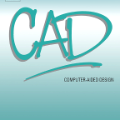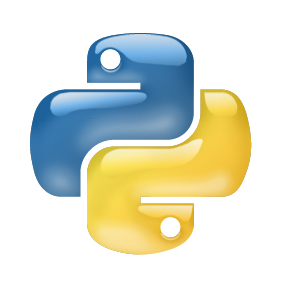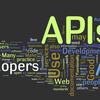We propose CAD-Assistant, a general-purpose CAD agent for AI-assisted design. Our approach is based on a powerful Vision and Large Language Model (VLLM) as a planner and a tool-augmentation paradigm using CAD-specific modules. CAD-Assistant addresses multimodal user queries by generating actions that are iteratively executed on a Python interpreter equipped with the FreeCAD software, accessed via its Python API. Our framework is able to assess the impact of generated CAD commands on geometry and adapts subsequent actions based on the evolving state of the CAD design. We consider a wide range of CAD-specific tools including Python libraries, modules of the FreeCAD Python API, helpful routines, rendering functions and other specialized modules. We evaluate our method on multiple CAD benchmarks and qualitatively demonstrate the potential of tool-augmented VLLMs as generic CAD task solvers across diverse CAD workflows.
相關內容
Large language models (LLMs) have achieved superior performance in powering text-based AI agents, endowing them with decision-making and reasoning abilities akin to humans. Concurrently, there is an emerging research trend focused on extending these LLM-powered AI agents into the multimodal domain. This extension enables AI agents to interpret and respond to diverse multimodal user queries, thereby handling more intricate and nuanced tasks. In this paper, we conduct a systematic review of LLM-driven multimodal agents, which we refer to as large multimodal agents ( LMAs for short). First, we introduce the essential components involved in developing LMAs and categorize the current body of research into four distinct types. Subsequently, we review the collaborative frameworks integrating multiple LMAs , enhancing collective efficacy. One of the critical challenges in this field is the diverse evaluation methods used across existing studies, hindering effective comparison among different LMAs . Therefore, we compile these evaluation methodologies and establish a comprehensive framework to bridge the gaps. This framework aims to standardize evaluations, facilitating more meaningful comparisons. Concluding our review, we highlight the extensive applications of LMAs and propose possible future research directions. Our discussion aims to provide valuable insights and guidelines for future research in this rapidly evolving field. An up-to-date resource list is available at //github.com/jun0wanan/awesome-large-multimodal-agents.
The rise of large foundation models, trained on extensive datasets, is revolutionizing the field of AI. Models such as SAM, DALL-E2, and GPT-4 showcase their adaptability by extracting intricate patterns and performing effectively across diverse tasks, thereby serving as potent building blocks for a wide range of AI applications. Autonomous driving, a vibrant front in AI applications, remains challenged by the lack of dedicated vision foundation models (VFMs). The scarcity of comprehensive training data, the need for multi-sensor integration, and the diverse task-specific architectures pose significant obstacles to the development of VFMs in this field. This paper delves into the critical challenge of forging VFMs tailored specifically for autonomous driving, while also outlining future directions. Through a systematic analysis of over 250 papers, we dissect essential techniques for VFM development, including data preparation, pre-training strategies, and downstream task adaptation. Moreover, we explore key advancements such as NeRF, diffusion models, 3D Gaussian Splatting, and world models, presenting a comprehensive roadmap for future research. To empower researchers, we have built and maintained //github.com/zhanghm1995/Forge_VFM4AD, an open-access repository constantly updated with the latest advancements in forging VFMs for autonomous driving.
Following unprecedented success on the natural language tasks, Transformers have been successfully applied to several computer vision problems, achieving state-of-the-art results and prompting researchers to reconsider the supremacy of convolutional neural networks (CNNs) as {de facto} operators. Capitalizing on these advances in computer vision, the medical imaging field has also witnessed growing interest for Transformers that can capture global context compared to CNNs with local receptive fields. Inspired from this transition, in this survey, we attempt to provide a comprehensive review of the applications of Transformers in medical imaging covering various aspects, ranging from recently proposed architectural designs to unsolved issues. Specifically, we survey the use of Transformers in medical image segmentation, detection, classification, reconstruction, synthesis, registration, clinical report generation, and other tasks. In particular, for each of these applications, we develop taxonomy, identify application-specific challenges as well as provide insights to solve them, and highlight recent trends. Further, we provide a critical discussion of the field's current state as a whole, including the identification of key challenges, open problems, and outlining promising future directions. We hope this survey will ignite further interest in the community and provide researchers with an up-to-date reference regarding applications of Transformer models in medical imaging. Finally, to cope with the rapid development in this field, we intend to regularly update the relevant latest papers and their open-source implementations at \url{//github.com/fahadshamshad/awesome-transformers-in-medical-imaging}.
Knowledge Graph Embedding (KGE) aims to learn representations for entities and relations. Most KGE models have gained great success, especially on extrapolation scenarios. Specifically, given an unseen triple (h, r, t), a trained model can still correctly predict t from (h, r, ?), or h from (?, r, t), such extrapolation ability is impressive. However, most existing KGE works focus on the design of delicate triple modeling function, which mainly tells us how to measure the plausibility of observed triples, but offers limited explanation of why the methods can extrapolate to unseen data, and what are the important factors to help KGE extrapolate. Therefore in this work, we attempt to study the KGE extrapolation of two problems: 1. How does KGE extrapolate to unseen data? 2. How to design the KGE model with better extrapolation ability? For the problem 1, we first discuss the impact factors for extrapolation and from relation, entity and triple level respectively, propose three Semantic Evidences (SEs), which can be observed from train set and provide important semantic information for extrapolation. Then we verify the effectiveness of SEs through extensive experiments on several typical KGE methods. For the problem 2, to make better use of the three levels of SE, we propose a novel GNN-based KGE model, called Semantic Evidence aware Graph Neural Network (SE-GNN). In SE-GNN, each level of SE is modeled explicitly by the corresponding neighbor pattern, and merged sufficiently by the multi-layer aggregation, which contributes to obtaining more extrapolative knowledge representation. Finally, through extensive experiments on FB15k-237 and WN18RR datasets, we show that SE-GNN achieves state-of-the-art performance on Knowledge Graph Completion task and performs a better extrapolation ability.
We propose a knowledge-enhanced approach, ERNIE-ViL, to learn joint representations of vision and language. ERNIE-ViL tries to construct the detailed semantic connections (objects, attributes of objects and relationships between objects in visual scenes) across vision and language, which are essential to vision-language cross-modal tasks. Incorporating knowledge from scene graphs, ERNIE-ViL constructs Scene Graph Prediction tasks, i.e., Object Prediction, Attribute Prediction and Relationship Prediction in the pre-training phase. More specifically, these prediction tasks are implemented by predicting nodes of different types in the scene graph parsed from the sentence. Thus, ERNIE-ViL can model the joint representation characterizing the alignments of the detailed semantics across vision and language. Pre-trained on two large image-text alignment datasets (Conceptual Captions and SBU), ERNIE-ViL learns better and more robust joint representations. It achieves state-of-the-art performance on 5 vision-language downstream tasks after fine-tuning ERNIE-ViL. Furthermore, it ranked the 1st place on the VCR leader-board with an absolute improvement of 3.7%.
The difficulty of deploying various deep learning (DL) models on diverse DL hardwares has boosted the research and development of DL compilers in the community. Several DL compilers have been proposed from both industry and academia such as Tensorflow XLA and TVM. Similarly, the DL compilers take the DL models described in different DL frameworks as input, and then generate optimized codes for diverse DL hardwares as output. However, none of the existing survey has analyzed the unique design of the DL compilers comprehensively. In this paper, we perform a comprehensive survey of existing DL compilers by dissecting the commonly adopted design in details, with emphasis on the DL oriented multi-level IRs, and frontend/backend optimizations. Specifically, we provide a comprehensive comparison among existing DL compilers from various aspects. In addition, we present detailed analysis of the multi-level IR design and compiler optimization techniques. Finally, several insights are highlighted as the potential research directions of DL compiler. This is the first survey paper focusing on the unique design of DL compiler, which we hope can pave the road for future research towards the DL compiler.
Compared with cheap addition operation, multiplication operation is of much higher computation complexity. The widely-used convolutions in deep neural networks are exactly cross-correlation to measure the similarity between input feature and convolution filters, which involves massive multiplications between float values. In this paper, we present adder networks (AdderNets) to trade these massive multiplications in deep neural networks, especially convolutional neural networks (CNNs), for much cheaper additions to reduce computation costs. In AdderNets, we take the $\ell_1$-norm distance between filters and input feature as the output response. The influence of this new similarity measure on the optimization of neural network have been thoroughly analyzed. To achieve a better performance, we develop a special back-propagation approach for AdderNets by investigating the full-precision gradient. We then propose an adaptive learning rate strategy to enhance the training procedure of AdderNets according to the magnitude of each neuron's gradient. As a result, the proposed AdderNets can achieve 74.9% Top-1 accuracy 91.7% Top-5 accuracy using ResNet-50 on the ImageNet dataset without any multiplication in convolution layer.
Language model pre-training has proven to be useful in learning universal language representations. As a state-of-the-art language model pre-training model, BERT (Bidirectional Encoder Representations from Transformers) has achieved amazing results in many language understanding tasks. In this paper, we conduct exhaustive experiments to investigate different fine-tuning methods of BERT on text classification task and provide a general solution for BERT fine-tuning. Finally, the proposed solution obtains new state-of-the-art results on eight widely-studied text classification datasets.
Named entity recognition (NER) in Chinese is essential but difficult because of the lack of natural delimiters. Therefore, Chinese Word Segmentation (CWS) is usually considered as the first step for Chinese NER. However, models based on word-level embeddings and lexicon features often suffer from segmentation errors and out-of-vocabulary (OOV) words. In this paper, we investigate a Convolutional Attention Network called CAN for Chinese NER, which consists of a character-based convolutional neural network (CNN) with local-attention layer and a gated recurrent unit (GRU) with global self-attention layer to capture the information from adjacent characters and sentence contexts. Also, compared to other models, not depending on any external resources like lexicons and employing small size of char embeddings make our model more practical. Extensive experimental results show that our approach outperforms state-of-the-art methods without word embedding and external lexicon resources on different domain datasets including Weibo, MSRA and Chinese Resume NER dataset.
Spectral clustering is a leading and popular technique in unsupervised data analysis. Two of its major limitations are scalability and generalization of the spectral embedding (i.e., out-of-sample-extension). In this paper we introduce a deep learning approach to spectral clustering that overcomes the above shortcomings. Our network, which we call SpectralNet, learns a map that embeds input data points into the eigenspace of their associated graph Laplacian matrix and subsequently clusters them. We train SpectralNet using a procedure that involves constrained stochastic optimization. Stochastic optimization allows it to scale to large datasets, while the constraints, which are implemented using a special-purpose output layer, allow us to keep the network output orthogonal. Moreover, the map learned by SpectralNet naturally generalizes the spectral embedding to unseen data points. To further improve the quality of the clustering, we replace the standard pairwise Gaussian affinities with affinities leaned from unlabeled data using a Siamese network. Additional improvement can be achieved by applying the network to code representations produced, e.g., by standard autoencoders. Our end-to-end learning procedure is fully unsupervised. In addition, we apply VC dimension theory to derive a lower bound on the size of SpectralNet. State-of-the-art clustering results are reported on the Reuters dataset. Our implementation is publicly available at //github.com/kstant0725/SpectralNet .





